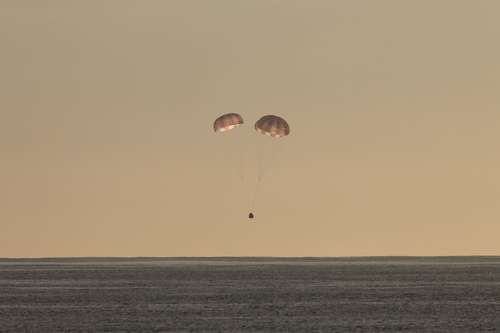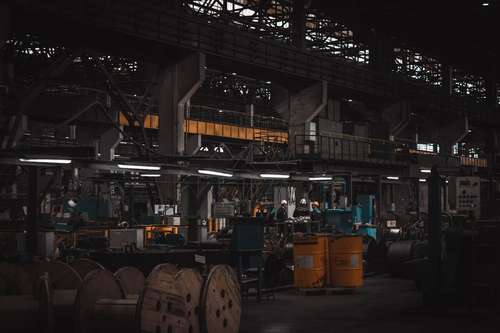Robo-dog deployed to spot cracks in Pompeii

In the ancient Roman city of Pompeii, a robotic dog has been put to work inspecting restoration work in the streets and exploring subterranean tunnels dug by tomb robbers.
Spot is a robot that can travel quickly on the flagstones and uneven ground of the excavated city while monitoring repairs and spotting faults in 2000-year-old brickwork.
According to Gabriel Zuchtriegel, director of the Pompeii archaeological park, "the mechanical mutt is a breakthrough in the domain of archaeology, where tough operational circumstances and enormous sites have hitherto ruled out the employment of robots meant for use in industries."
Spot will move below after becoming accustomed to patrolling the streets of the city, which was buried by Mount Vesuvius' eruption in 79AD.
"We intend to put these robots to the test in the subterranean tunnels dug by illegal diggers surrounding Pompeii," he stated. "Because the tomb raider tunnels are frequently quite dangerous, deploying a robot might be a game-changer, allowing us to work faster while being completely safe."
Spot will compete with Argo, Pompeii's resident real-life dog who keeps archaeologists company, as it gets to work.
The robot isn't the only piece of cutting-edge technology to arrive in Pompeii. A drone fitted with a laser scanner will take flight while the dog patrols the streets, delivering 3D images of structures to detect damage or symptoms of sinking.
According to Dr. Zuchtriegel, the goal was to "increase both the quality of monitoring of existing places and boost our understanding of the status of progress of work in regions undergoing recovery or restoration to manage the site's and employees' safety."
At Pompeii, cutting-edge computer technology is being utilized to sort through and reassemble thousands of shattered wall painting fragments that had been sitting in crates in storage rooms for years. Scans of all the pieces are loaded into a computer that has access to data on Pompeii fresco styles to aid in the completion of the massive jigsaw puzzle before being delicately fitted together by a robot arm.
Outside the city walls, archaeologists recently discovered a ceremonial chariot with metal and tin medallions at the site of a buried villa. However, they discovered a network of tunnels, indicating that tomb raiders had arrived first.
Spot's arrival continues Pompeii's long history with dogs. The remains of a guard dog that was still attached to its post and a mosaic with the Latin word Cave Canem – beware of the dog – were among the previous archaeological finds.
It's unclear what exactly Spot is looking for in terms of structural difficulties, though one of them appears to be tied to the tunnels built by illicit relic hunters. Pompeii Archaeological Park has been approached by MailOnline for additional information.
'We want to see how these robots work in the underground tunnels dug by illegal excavators that we're unearthing around Pompeii,' said Gabriel Zuchtriegel, head of the Pompeii archaeological park.
'Because the safety circumstances within the tunnels excavated by tomb robbers are often quite perilous, the employment of a robot could represent a breakthrough that would allow us to go at a faster pace while being completely safe.'
Spot can map its environment, sense and avoid obstacles, climb stairs, and open doors, and is suitable for both inside and outdoor use.
It can do dangerous activities in hostile locations like nuclear power plants, offshore oil fields, and construction sites.
In Pompeii, Spot isn't the only cutting-edge technology in use.
The Leica BLK2FLY, a flying laser scanner capable of completing autonomous 3D scans, is also being used at the Pompeii archaeological park.
As demonstrated by SpaceX, the Spot may be utilized for a variety of heavy-duty tasks, including monitoring rocket launch sites.
The French army also uses it to assist military training staff in completing training scenarios.
The Spot was created with businesses in mind; in fact, when a company buys a Spot device, they must agree to the terms and conditions that "this is not certified safe for home use or meant for use near children."
Boston Dynamics first introduced The Spot in 2016, and it went through a series of tests before becoming on sale on June 17, 2020.
Spot will, however, be available for residential usage soon, according to Boston Dynamics creator Mark Raibert.
Share this article
Author
Related Posts

Trump Issues Global Tariff Ultimatum in Escalating Greenland Takeover Crisis

Trump Threatens Insurrection Act Deployment as Minnesota Protests Over Fatal ICE Shootings Escalate

NASA Completes Historic First-Ever Emergency Medical Evacuation from Space
